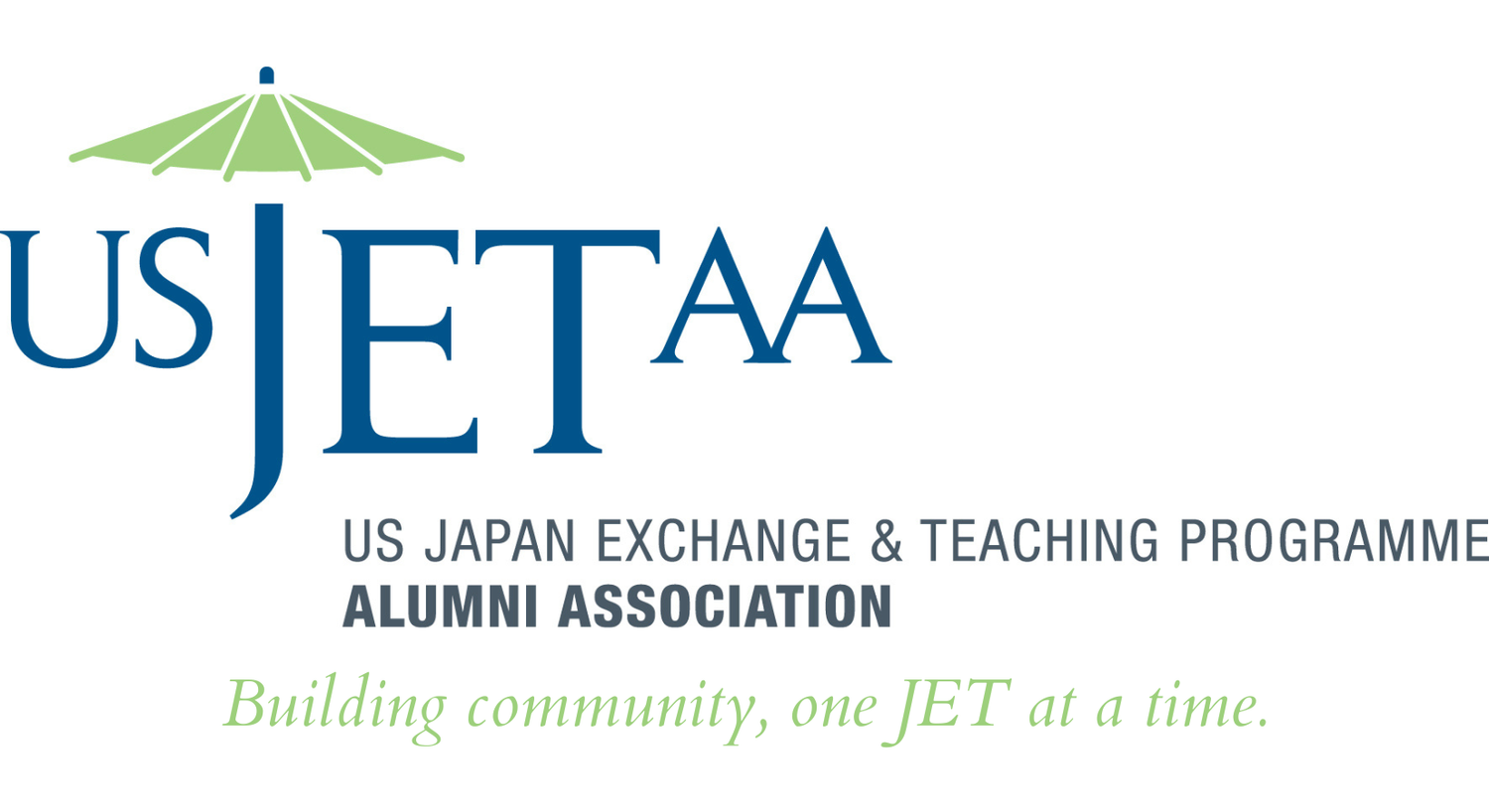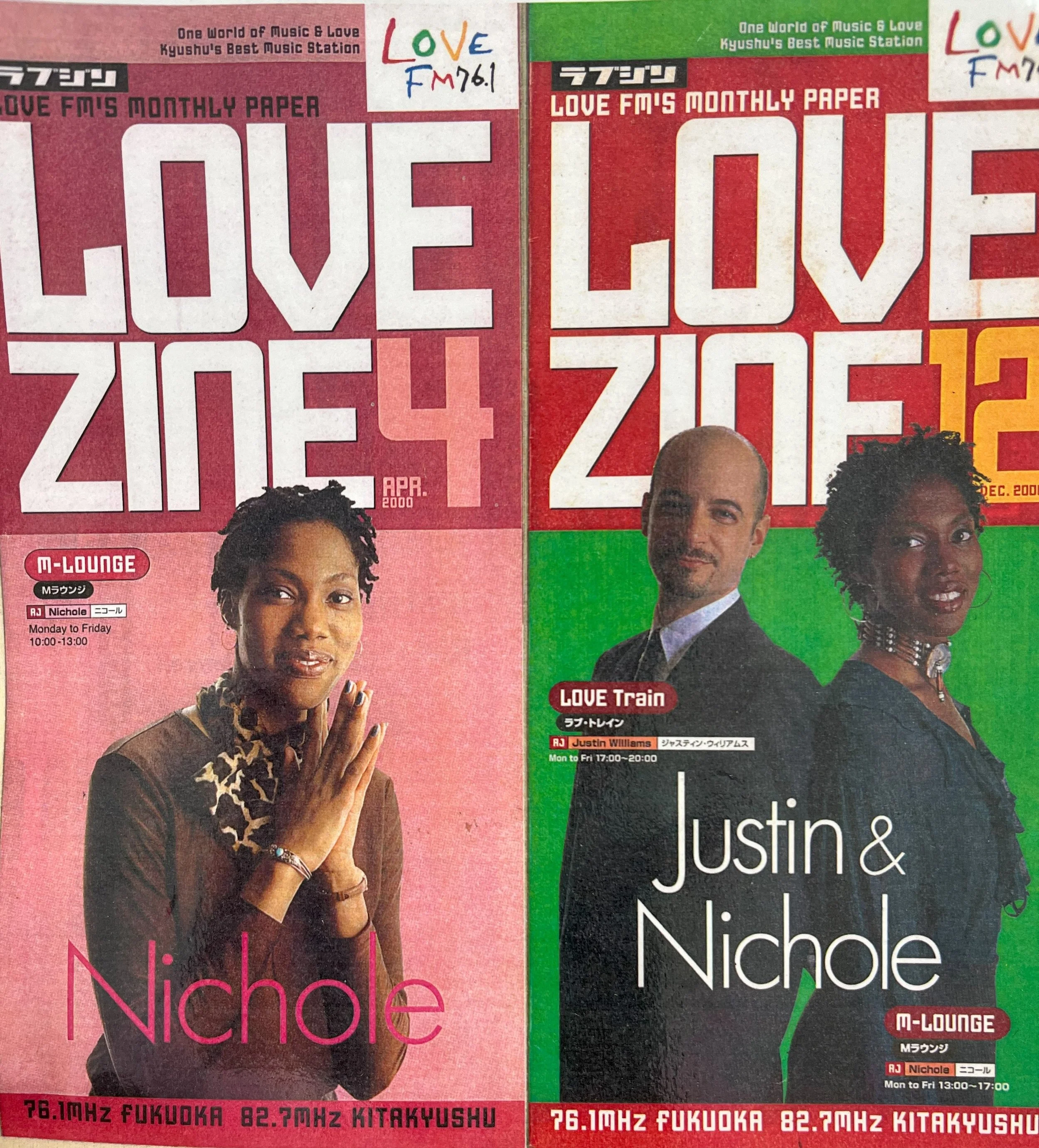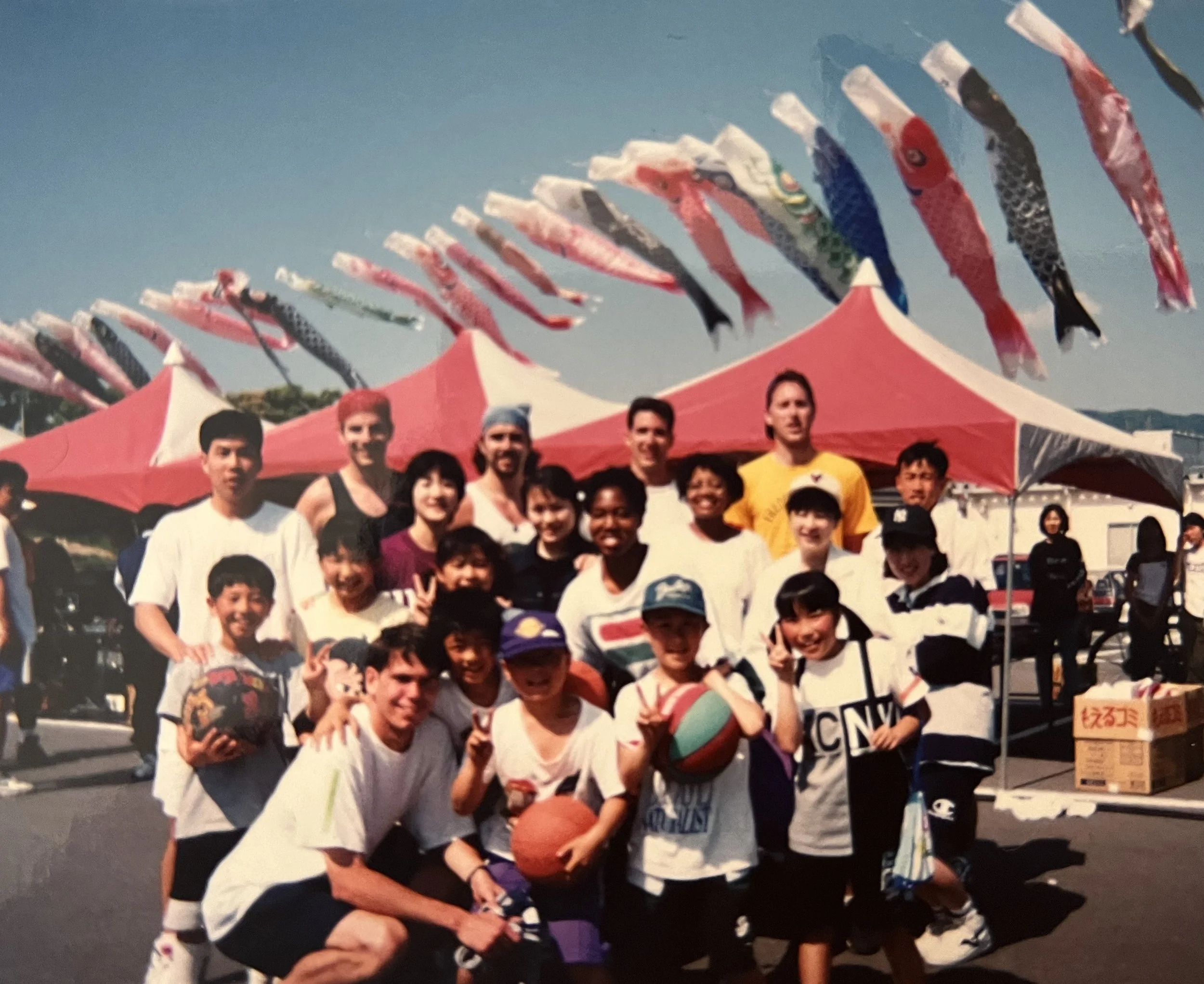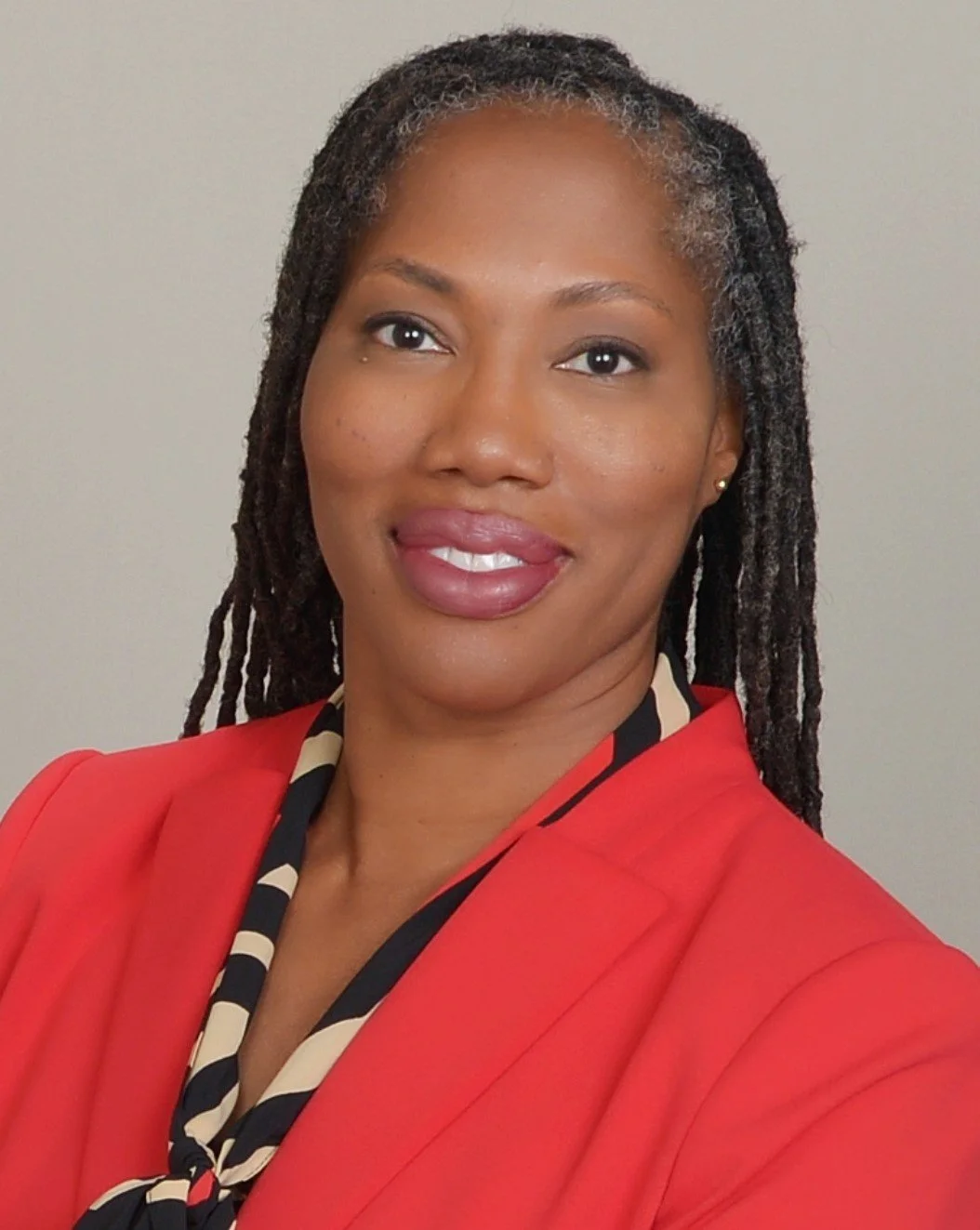How Japan’s Chalkboards and Soundboards Formed a Japanese Teacher in the U.S.
Nichole Mayfield (Nagasaki, 1995-1996)
Interviewed by Jin (Nagasaki, 2018-2021)
For the majority of JETs, their time in Japan lives on through fond memories: bowing on instinct, deciphering kanji-packed paperwork, and forming friendships over cups of green tea and numerous omiyage snacks. But for Nichole Mayfield, the experience didn’t end with a plane ride home. No, instead, it set the stage for a career she hadn’t fully imagined yet. One where Japanese wasn’t just a skill but the foundation for working in a classroom. But that’s jumping ahead. . . . We haven’t even reached the part about her having a full career hosting a radio program that broadcasts all over Kyushu, all while working full-time teaching English at a cram school post JET. . .
Before all that, it all started with her experience on the JET Program with her placement in Kuchinotsu-cho, Nagasaki (口之津町). The town now dissolved (an effect we’ve slowly become too accustomed to) was where a kind neighbor named Saito-san ensured she was always well-fed. Fast forward to a plane ride later, back to the US, and a chance conversation at a parent-teacher event led to a subbing gig, which eventually turned into a full-time Japanese language teaching job.
Indeed, her path definitely wasn’t clear at first, but it was guided by something steady: a belief in opportunities. From JET to Japanese language teacher, she sat down with us to reflect on her time in Japan, her transition into teaching, and everything in between.
Nichole’s students in her Virginia public school classroom opening gifts from students in Japan as part of a Kizuna Across Cultures student exchange.
1. Did you always envision becoming a teacher, or did that interest develop after your time on JET?
“While in college, I did not know that I would become a teacher. My main goal was to live and work in Japan, but I did not know how that would happen. Doing JET was a way to get my foot in the door. I came to enjoy teaching while in Japan.”
2. What was the process like for becoming a Japanese language teacher after returning to the U.S.?
“After a few months back in Virginia, the school year had already begun. I applied to be a substitute teacher. That was a way to get into the FCPS (Fairfax County Public Schools) system. I did substitute teaching between March–June 2005. I was fortunate that within that time, there was a Japanese language teacher who planned to take maternity leave. I filled in for her through May and June. That was a great way to learn about Japanese language teaching and to meet other Japanese language teachers. While subbing, I learned of a school that would offer Japanese. I applied as an early hire and was accepted. There were four interviews in total. Then I began the provisional licensing process. In 2005, the requirements were: job offer, SAT scores (in lieu of PRAXIS, which did not exist for Japanese at the time), college transcripts, and ACTFL (American Council on the Teaching of Foreign Languages) test scores of Advanced Low for oral and written tests.”
3. What advice would you give to returning JETs who are interested in pursuing a career in education or language teaching?
“Research the licensure process for your state. Find all of your important documents, such as college transcripts, test scores, register for ACTFL proficiency tests, become a substitute teacher, get to know the local Japanese teachers, and contact and/or join a Japanese teacher association. Continue your language studies.”
Nichole with students at her school in Nagasaki during JET.
4. You began studying Japanese at a young age. What initially sparked your interest in the language and culture?
“My Navy father and my family moved to Hawaii when I was 15. Hawaii has a large, multi-generational Japanese-American population. There are many tourists from Japan as well. Japanese language and culture are everywhere in Hawaii. I was curious about the things that were in my new surroundings. When it was time to register for classes, Japanese was offered at my new high school, and I thought I would give it a try. It immediately became my favorite class. I befriended a classmate whose mother was from Hokkaido. Visits to their home were my first personal connection to Japan.”
5. Since you were already proficient in Japanese before joining the JET Program, how do you think that influenced your overall experience in Japan, both in and out of the classroom?
“Going to Japan with prior knowledge of the language and culture made life so much easier, and it was still HARD. Yes, I knew the basics, but living and working in a different country is not easy. There were many struggles, and I cannot imagine trying to do that with absolutely no understanding of the language.”
6. You were placed in Kyushu, where regional dialects can be quite distinct. What was it like navigating hougen (ほうげん), and how did it impact your communication or teaching?
“During the Nagasaki-JET orientation, a veteran JET gave a presentation about the Nagasaki dialect. That came in handy. I felt a commonality with people in Kyushu as they are from the southern part of Japan, and I am from the Southern U.S. My place of birth has a distinctive accent as well. I enjoyed hearing Kyushu-ites compare their dialect with that of standard Japanese. I had fun sharing some of the highlights of the Tidewater accent.”
Nichole featured in LoveZine, the magazine associated with Love FM Radio.
7. You were involved with Love FM during your time in Japan. Can you share how that opportunity came about? What was your role, and how might other JETs pursue similar extracurricular experiences?
“Love FM is an international radio station in Fukuoka. When I moved to Fukuoka after my time on JET, I began to listen to it. It was comforting to have access to English language broadcasts. Just by a chance conversation, a workmate mentioned that Love FM was having auditions for new DJs and that I was funny and would be good for radio. I mentioned that I had done radio in college and had a non-commercial radio license. My workmates encouraged me to apply. I applied and was interviewed. I was accepted and began as a substitute DJ, filling in for absences. After about six months, I started a daily show called M-Lounge 10 AM-12 noon. After six months, the show was extended an hour to 1:00 PM. I did that show for 1.5 years. Live broadcast, highlighting popular English language music from around the world, sharing news and weather, interviews with visiting musical artists, and lots of free CDs and concerts! I was still working full-time in the evenings at a juku (Japanese cram school), so it was a very packed schedule. A schedule change at the radio station allowed me to reduce my time to once a week, which was much better for work-life balance.
I encourage JETs to pursue their hobbies while living in Japan. Also, take a chance and say yes to an opportunity. I like music, but I had no aspiration to work at a radio station in Japan. However, when someone mentioned that auditions at Love FM would be held, I took a chance. If things did not work out, I already had steady employment. Having that safety net of working at a juku made it easier to investigate other opportunities without the added worry of making a living.
Whatever your hobby or interest is, learn about the activity in the Japanese language so that you can showcase your knowledge more effectively. People believe what they can see. If you can be seen as competent in the subject as well as the subject lingo in Japanese, that is a win-win scenario for more experiences to come your way.”
With fellow JETs and community friends after a local basketball tournament.
Nichole’s story reminds us that opportunities aren’t something we just wait for. Instead, they are something we create with our own hands. Years after leaving her placement in Nagasaki, she still finds herself tethered to the JET Program in unexpected ways. Every so often, she meets someone with roots in Kyushu, hears a familiar turn of phrase, or even slips back into Kyushu hougen without thinking. These little moments remind her that JET wasn’t a one‑and‑done.
No. It was the foundation for a lifelong relationship with the language and with the people and places that first welcomed her in.
And perhaps, it’s so for all of us.
About Nichole Mayfield (Nagasaki, 1995-1996)
Nichole Mayfield is a Japanese Language Teacher for Fairfax County Public Schools (VA). Nichole, originally from Chesapeake, Virginia, majored in East Asian Studies at Washington and Lee University. Afterwards, she worked as an Assistant Language Teacher (ALT) for the JET Program in Nagasaki prefecture from 1995 to 1996. Nichole then moved to Fukuoka prefecture where she taught English at cram schools and pre-schools and also was a radio personality for Love FM, an international radio station. Upon returning to Virginia, she began teaching Japanese in Fairfax County Public Schools. Nichole has spent 18 years teaching Japanese between South County Middle School and South County High School in Lorton, Virginia. Currently, she teaches at South Lakes High School in Reston, Virginia. Ms. Mayfield also serves as emcee for Junior Japan Bowl, an online academic competition for grades 1-8.
The Senpai Spotlight series features JET alumni from the US who have made successful careers for themselves in various fields—with the goal of inspiring JETs and JET alumni to pursue their own dreams while also offering some words of advice only a senpai could know.
If you, or someone you know, would like to be featured as a Senpai Spotlight, please reach out to us at contact@usjetaa.org.
This edition of Senpai Spotlight was written by Jin, a graduate student and writer. Her love for Japanese literature took her beyond the pages and straight to the JET Program (Nagasaki, 2018-2021). There, she wrote for the Nagazasshi, a JET-run magazine. These days, she’s a freelance writer and editor, still chasing great stories and crafting her own along the way.







